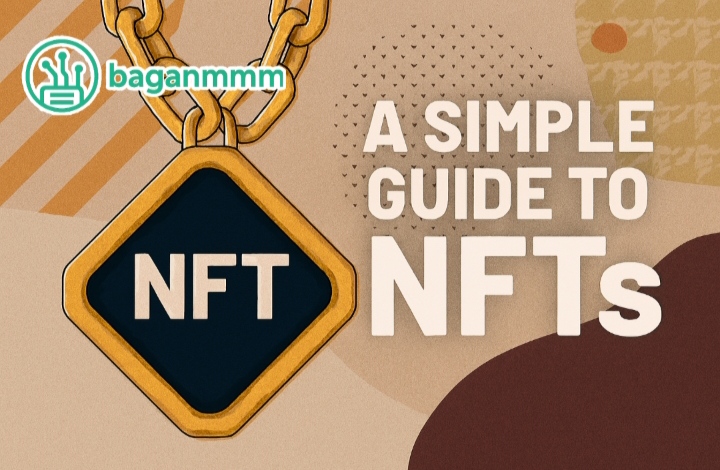In a world where digital assets are reshaping value systems, few innovations have stirred as much excitement—and confusion—as NFTs. Whether you’re a creator, investor, or strategist, understanding NFTs is essential to navigating the future of ownership, art, and identity.

Definition: What Is an NFT?
An NFT (Non-Fungible Token) is a unique digital identifier recorded on a blockchain that certifies ownership and authenticity of a specific asset—whether digital or physical. Unlike cryptocurrencies such as Bitcoin or Ethereum, which are fungible (interchangeable), NFTs are non-fungible, meaning each one is distinct and cannot be replaced by another.
Core Characteristics
– Uniqueness: Each NFT has a unique token ID and metadata, making it distinguishable from any other token—even if the associated asset looks identical.
– Blockchain-Based: NFTs are stored on decentralized ledgers like Ethereum, Solana, or Polygon, which record ownership history and ensure transparency.
– Smart Contracts: NFTs are governed by programmable rules embedded in smart contracts, which define how they behave—such as royalty payments or transfer conditions.
– Digital Certificate: Think of an NFT as a digital deed or certificate of authenticity for an asset, whether it’s a JPEG, music file, video clip, or even a physical item.
“NFTs are assets like artworks, digital content, or videos that have been tokenized via a blockchain. The connection between the token and the asset is what makes them unique.” — Investopedia
What Can Be an NFT?
NFTs can represent nearly anything:
– Digital art and illustrations
– Music tracks and albums
– Video clips and animations
– Virtual real estate and game items
– Domain names and identity credentials
– Physical assets (e.g., luxury goods, event tickets) via tokenized representation
Even something as quirky as a photo of a banana with a smiley face can be minted as an NFT—if it’s linked to a unique token and stored on a blockchain.
Legal and Philosophical Notes
While NFTs prove ownership on the blockchain, they don’t automatically grant copyright or intellectual property rights. The legal meaning of owning an NFT depends on the terms set by the creator and platform.
“The ownership of an NFT as defined by the blockchain has no inherent legal meaning and does not necessarily grant copyright or IP rights over its associated digital file.” — Wikipedia
How NFTs Work
NFTs operate on blockchain networks—primarily Ethereum, though platforms like Solana, Tezos, and Binance Smart Chain also support them. The process of creating, owning, and transferring NFTs involves several key components:
1. Minting: Creating the NFT
Minting is the process of turning a digital file (image, video, music, etc.) into a blockchain-based token.
– The creator uploads the asset to a platform like OpenSea or Rarible.
– Metadata (title, description, creator info, asset link) is encrypted and stored on-chain.
– A smart contract assigns a unique token ID and governs how the NFT behaves—e.g., resale royalties or transfer permissions.
“Tokens are unique identification codes created from metadata via an encryption function. These tokens are then stored on a digital ledger, while the assets themselves are stored in other places.” — Investopedia
2. Smart Contracts: The Logic Layer
Smart contracts are self-executing code stored on the blockchain. They define:
– Ownership rules: Who owns the NFT and how it can be transferred.
– Royalty logic: Automatic payments to creators on secondary sales.
– Access rights: Some NFTs unlock exclusive content, memberships, or in-game assets.
Most NFTs follow Ethereum’s ERC-721 or ERC-1155 standards, which define how tokens behave and interact across platforms.
3. Storage: On-Chain vs. Off-Chain
– On-chain: Metadata and token ID are stored directly on the blockchain.
– Off-chain: The actual asset (e.g., image or video) is often stored on decentralized file systems like IPFS (InterPlanetary File System) or centralized servers, linked via the token.
This hybrid model balances permanence with scalability—but it also introduces risks if the off-chain asset becomes inaccessible.
4. Ownership & Provenance
Every NFT transaction is recorded on the blockchain, creating a transparent and immutable history of:
– Who minted it
– Who bought it
– When it was transferred
– What price it sold for
This makes NFTs ideal for verifying authenticity and tracking provenance—especially in art, fashion, and collectibles.
5. Utility & Interoperability
NFTs aren’t just static files—they can unlock dynamic experiences:
– Gaming: NFTs represent characters, weapons, or land that players truly own.
– Memberships: Some NFTs grant access to exclusive clubs, events, or content.
– Cross-platform use: NFTs can be used across different apps and games that support the same token standards.
“Some NFTs offer additional benefits, like access to exclusive events or in-game assets, enhancing their value beyond mere ownership.” — Cointelegraph
Key Features:
| 🔑 Feature | 📘 Description |
|---|---|
| Uniqueness | Each NFT is distinct, with a unique token ID—even if the visual asset appears similar. |
| Verifiable Ownership | Blockchain records prove who owns the NFT and when it was acquired or transferred. |
| Programmable Royalties | Creators can embed royalty logic to earn a percentage every time the NFT is resold. |
| Interoperability | NFTs can be used across multiple platforms, games, and marketplaces that support the same standards. |
Use Cases of NFTs
NFTs aren’t just digital art—they’re transforming industries:
Art & Collectibles
– Artists tokenize their work to sell directly to collectors.
– Collections like CryptoPunks and Bored Ape Yacht Club have become cultural icons.
Gaming
– Games like Axie Infinity use NFTs for characters, items, and land.
– Players own their assets and can trade them outside the game.
Virtual Real Estate
– Platforms like Decentraland and The Sandbox let users buy, sell, and build on virtual land parcels.
Fashion & Brands
– Companies like Nike and Gucci release limited-edition digital wearables as NFTs.
Music & Media
– Musicians sell albums, concert tickets, and exclusive content as NFTs—often with built-in royalties.
The Internet of Assets
NFTs represent a shift from renting digital experiences to owning digital assets. On platforms like Ethereum:
– You own your music file—not just access it via Spotify.
– You own your social media handle—not just borrow it from a platform.
– You can sell, trade, or transfer assets freely, without centralized control.
Market Trends & Challenges
As of September 2025:
– Global NFT market cap is around $6 billion, with daily trading volume near $5.9 million.
– Popular collections like Pudgy Penguins and Mutant Ape Yacht Club remain active.
– However, mainstream hype has cooled, and many projects face sustainability challenges.
Risks to Consider:
– Market volatility and speculative bubbles.
– Environmental concerns (especially with proof-of-work blockchains).
– Copyright and intellectual property disputes.
– Platform dependency and asset storage risks.
Getting Started with NFTs
If you’re new to NFTs, here’s a roadmap:
1. Learn the Basics: Understand blockchain, wallets, and marketplaces.
2. Choose a Platform: Start with OpenSea, Rarible, or Magic Eden.
3. Secure Your Wallet: Use MetaMask or Ledger for safe storage.
4. Mint or Buy: Create your own NFT or purchase one from a verified collection.
5. Engage the Community: Join Discords, follow creators, and stay informed.
Final Thoughts
NFTs are more than tech—they’re a statement about ownership, creativity, and decentralization. Whether they evolve into mainstream infrastructure or remain niche collectibles, they’ve already changed how we think about digital value.
Alice is the visionary behind Baganmmm Tech, a platform he founded with a passion for demystifying the complex world of technology. As the Lead Technologist, he's often found in his home lab – a cozy, wire-filled sanctuary where ideas are born and code is meticulously crafted. His infectious enthusiasm and knack for explaining intricate concepts make him the go-to expert for everything from web development to emerging tech trends.
